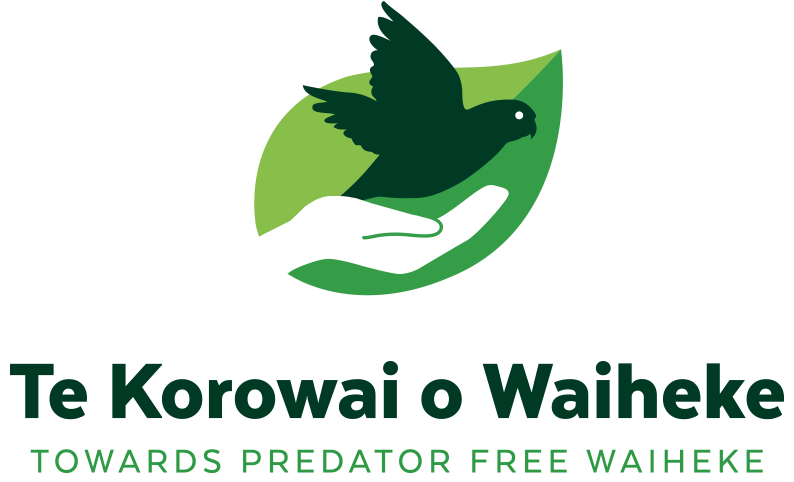Celebrating the region’s predator-free wins for Auckland Anniversary
It’s Auckland Anniversary and while a public holiday is a nice way to mark the occasion, we want to take the opportunity to celebrate the region where predator-free began.
The big green turtle, Maria Island now hosts an immense amount of life on her back.
You may not have heard of Maria Island (Ruapuke). It’s a small unassuming island to the north of Waiheke, nestled among the island chain known as the Noises. From Palm Beach or other northwest views from Waiheke, the islands lay scattered together on the horizon. Picking out Maria is easy. It has the appearance of a giant green turtle that’s risen from the depths, holding a living world on its back.
But this wasn't always the case. In late 1959, Waiheke schoolteacher Alistair McDonald and some of his conservation-minded students happened upon the island to find a desolate landscape laden with the massacred remains of around 1000 birds. Upon closer inspection, the group realised the island had no fresh water and the rats who had taken up residence were killing the white-faced storm petrels (takahikare-moana) to keep hydrated.
Disgraced at the sight, Alistair and his students took action. The students formed a group under the junior division of Forest and Bird, and with their teachers’ guidance, they fundraised, wrote to the Ministry of Agriculture, and raised £5 for rat bait. By February 1960, they had their supplies and executed their plan, baiting the whole island. When Alistair returned to the island in November of the same year, there was no sign of rats and white-faced storm petrels were already nesting again. In 1964 the island was officially declared rat-free.
Maria’s bounceback continues to grow and inspire. It is now a thriving breeding ground for many other species including northern diving petrels (kuaka), fluttering shearwaters (pakaha), grey-faced petrels (ōi) and little blue penguins (kororā).
Alistair and his students’ intrinsic drive to protect taonga species by ridding the island of rats resulted in what is believed to be the first successful island rat eradication in the world.
Waiheke schoolteacher Alistair McDonald and a group of his students pioneered rat eradication in the Hauraki Gulf in 1960.
In an article to celebrate the 60 year anniversary of their efforts, Forest & Birds chief conservation advisor Kevin Hackwell said to the Waiheke Weekender that he wanted to make sure their actions aren’t forgotten.
“All over the world, we celebrate what they started because basically these same techniques have been used on more than 1200 islands worldwide. Alistair and the students’ work formed the basis for today’s predator-free New Zealand movement.”
The recovering saddleback (tīeke) and bellbird (korimako) now reside on predator-free Tiritiri Matangi Island. Photo by Charlie Thomas.
Other islands in the Hauraki Gulf were quick to follow. The rest of the Noises Island chain undertook eradication programmes in the 1980s but suffered incursions until nearby Rakino Island also became predator-free in 2002. The island chain remains a critical habitat for seabirds, especially in the inner gulf.
Tiritiri Matangi completed its own rat eradication programme in 1993 and is one of the oldest island sanctuaries in New Zealand. Combined with community efforts in forest regeneration spanning three decades, Tiritiri is now home to thriving populations of some of Aotearoa’s most loved species. It operates as an open sanctuary and welcomes visitors, volunteers, and school groups year-round.
To the north, New Zealand’s first Nature Reserve, Little Barrier (Hauturu-o-Toi), was declared predator-free in 2006. The island is closed to the public but its intricate ecosystem supports some of Aotearoa’s most vulnerable and treasured species including wētāpunga and kiwi.
Following the successes in removing predators from smaller islands, larger targets came into frame. Rangitoto and Motutapu Islands together have a landmass of 3,800 hectares. A successful possum and wallaby eradication took place there in 1992, but in 2007 sights were set on the remaining predators. With seven target species and a high incursion risk being close to the mainland, the Motutapu/Rangitoto eradication was one of the most complex island pest-eradication programmes to date. It took four years to achieve, but they got there in the end.
According to Predator Free NZ, 46 of the 50 Islands in the Hauraki Gulf are predator-free with Waiheke working hard to be number 47. Where once many of the region’s species faced the same fate as the white-faced storm petrels on Maria island, there is now a network of safe havens for our taonga species to thrive.
At the heart of the predator-free movement are people like the Alistair McDonalds of the world, proving the impossible is possible, echoing the words of Margaret Mead.
“Never doubt that a small group of thoughtful, committed citizens can change the world; indeed, it’s the only thing that ever has.”
As we fix our sights on Predator Free 2050, and the projects get more and more ambitious, remember we have a local schoolteacher and his students to thank for carving out the first path.
Happy Anniversary Auckland, where predator-free began.



